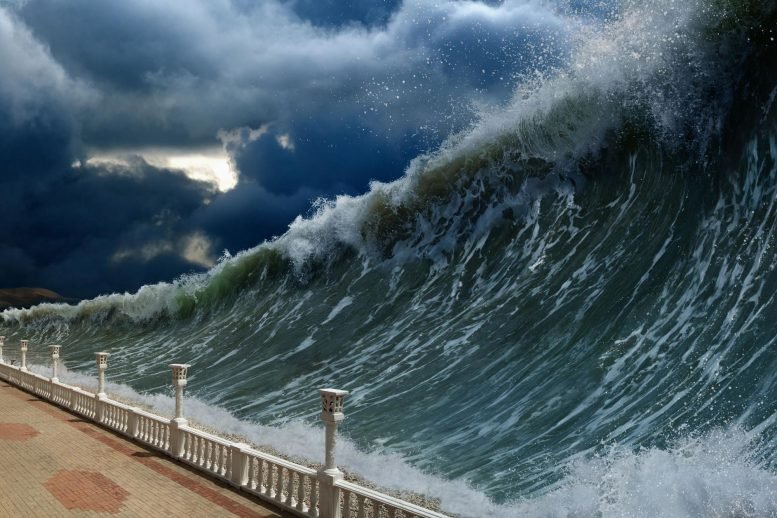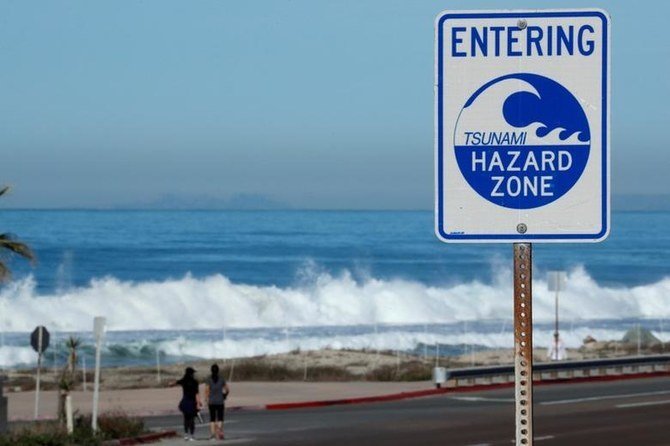The world is already facing so many natural calamities, and tsunamis are unpredictable among them. Recently in Specific areas of the world, scientists have spotted a new and possibly disastrous tsunami risk, which is in connection with strike-slip faults under the sea. Strike-slip faults are a type of breaking of rocks in the earth’s crust, in which blocks of rocks pass over each other parallel to the strike.
Far now it has been assumed that earthquakes at strike-slip faults can only generate disastrous tsunamis if they generate landslides under the water but after some detailed research and with the help of a supercomputer named Blue Waters, scientists have shown that in coastal areas the risk is much more devastating. Also, it has been observed that lateral movements and energy generated at strike-slip faults can trigger this unpredictable disaster, researchers said that it is just like shaking a cup of water from each side.
How Tsunamis occur?
Civil engineer Mohamed Abdelmeguid from the University of Illinois at Urbana-Champaign says that in this study a physics-based model was used which provides important information about dangerous results associated with strike-slip faulting. Specifically, the importance to address such risks is to reduce the damage to other bays that are traversed by strike-slip faults.

Researchers found that an “intersonic” earthquake is required for a tsunami to occur. An intersonic earthquake is an event where breaking happens so fast that the movement of the fault line is faster than the seismic shear waves generated in the crust. The coastal cities near strike-slip faults are in danger specifically when such faults traverse inland bays. The San Francisco Bay Area, Izmit Bay in Turkey, and the Gulf of Al-Aqaba that is located in Egypt are some places that are under-prone to tsunamis. The boundaries of such bays are being pushed and pulled that increases the chances of tsunamis. This will result in the following three incidents to connect.
⦁ The starting movements and shockwaves.
⦁ The displacement of water again and again during earthquake incidents.
⦁ And the movement of tsunami waves at last.
Civil engineer Ahmed Elbanna says that these three incidents will have different effects that depend upon the specific geography of the surrounding land and bathymetry of the bay. “Dissimilar to the earthquakes and after the water displacement that occurs many miles offshore, an earthquake and tsunami which occurs within the narrow confines of a bay will give permit of very little time for giving a warning to the coast.”

Conclusion
The main goal here is to understand more about how tsunamis occur and are triggered in which parts of the earth?. What are the places that are more prone to tsunamis so that we’re better prepared for future events? Far now, this specific risk hasn’t been factored into models. It has been observed that strike-slip faults and tsunamis have relationships between them, but that too in particular parts of the world.
But in this case, researchers tried to find out the basics of such faults, and help them to identify various places around the world that could be prone to these incidents of tsunamis. The researchers think that the devastating tsunami in September 2018 that hit Palu on the Indonesian island of Sulawesi, that it was caused by the spark of a 7.5 magnitude earthquake, the mechanism of that tsunami is highlighted in this study.
Costa Sinalakis, a civil engineer at the University of Southern California, says, “It seems that a bulldozer had come into the city and leveled the entire city. So it’s important for us to try to understand what happened”. You can read the full research published in PNAS.
